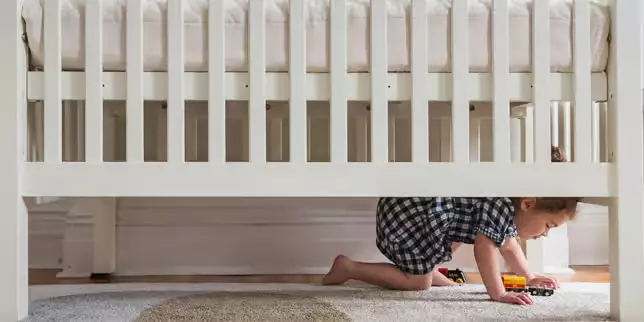Transitioning your child from a crib to a toddler bed is a monumental decision that echoes through the fabric of parenting. While it may be tempting to discard the crib as your baby grows, timing is everything in ensuring a harmonious sleep environment for both parent and child. The big bed process should be approached with care, fully considering the unique needs and readiness of your little one. Here are some critical insights about when to confidently embrace—or momentarily pause—the move to a big kid bed.
Understanding the Right Age: Why Three is the Magic Number
One of the first signs to consider when weighing the decision to move to a toddler bed is your child’s age. Research reveals that while kids may physically outgrow their cribs before three years old, developmentally, they may still be clinging to their familiar sleeping space. Cribs provide a sense of security and boundaries crucial for toddlers during their formative years. Transitioning before they are ready may invite feelings of insecurity, resulting in chaotic nights and sleep disruptions. As a parent, resist the social pressure to rush; after all, every child is unique, and three is generally seen as a foundational age for this pivotal change.
Assessing Sleep Quality: Existing Issues Demand Attention
Before plunging into the transition, evaluate your toddler’s current sleep patterns. If your child experiences frequent awakenings during the night, has trouble settling down, or rises too early in the morning, these are glaring red flags. Transitioning to a big bed might exacerbate these issues, leading to even more restless nights. Prioritize addressing sleeping problems first—for instance, refining bedtime routines or introducing calming strategies can foster a healthier sleep environment. It’s an investment in restoring peace to your child’s rest and ultimately your own sanity.
Contentment in the Crib: Embrace the Status Quo
Perceived necessity can often skew parental judgment. Just because your toddler has reached a certain age doesn’t mean they are ready to say goodbye to their crib. Contentment makes a strong case for waiting; if your child remains snug and happy within the confines of their crib, take your time. You must prioritize your child’s feelings over societal expectations. If they seem sleepy and satisfied in their crib, there’s no compelling reason to disrupt that until they express interest in making the leap themselves.
The Climber’s Dilemma: Assessing Risk Versus Comfort
Active toddlers, naturally curious and bursting with energy, may attempt to climb out of their cribs, signaling a readiness to explore their environment. However, switching to a toddler bed at this juncture may not be the prudent choice. If climbing has become a habit, take a step back and evaluate how to manage this adventurous spirit without forfeiting the safety that the crib offers. Using sleep sacks, altering sleep schedules, or introducing reward systems can successfully curb climbing behaviors while still keeping them snug in their crib for a while longer.
Boundaries and Expectations: Teaching Lessons in Consistency
If your toddler has a habit of testing boundaries during the day, consider how these behaviors may translate into nighttime. Will they respect bedtime rules? Establishing clear boundaries is crucial in ensuring that a new bed won’t become a free-for-all. Implement strategies, such as toddler clocks, to enhance their understanding of sleep expectations. Consistency is key; once your little one has shown progress in adhering to daytime boundaries, you can reassess their readiness for a big bed.
Anticipating New Additions: Timing With New Babies in Mind
For parents expecting another child, the timing of the transition becomes even more critical. In many cases, it’s tempting to shift your toddler to a big bed to free up the crib for the newcomer. However, think hard about your toddler’s readiness. If they aren’t fully prepared, they may experience jealousy or insecurity that could disrupt sleep for everyone involved—newborn included. This transition often highlights the balance between meeting a toddler’s needs and accommodating an incoming baby.
A Reversal is Never Too Late: Finding Security When Needed
For those who have already introduced the big bed but are encountering problems, don’t lose hope. It’s perfectly acceptable to reintroduce the crib, even if it’s a travel crib, to restore the secure sleeping environment your child may crave. Sometimes, reverting to familiar boundaries can help improve sleep quality. Every parenting decision comes with its challenges, and recognizing when to adapt is a crucial part of the journey.
With each child’s unique journey unfolding, take the time to reflect on your individual circumstances and your toddler’s behavior before making the leap to a big kid bed. Your intuition, paired with an awareness of these signals, will guide you through this wonderful yet intricate phase of parenthood.

